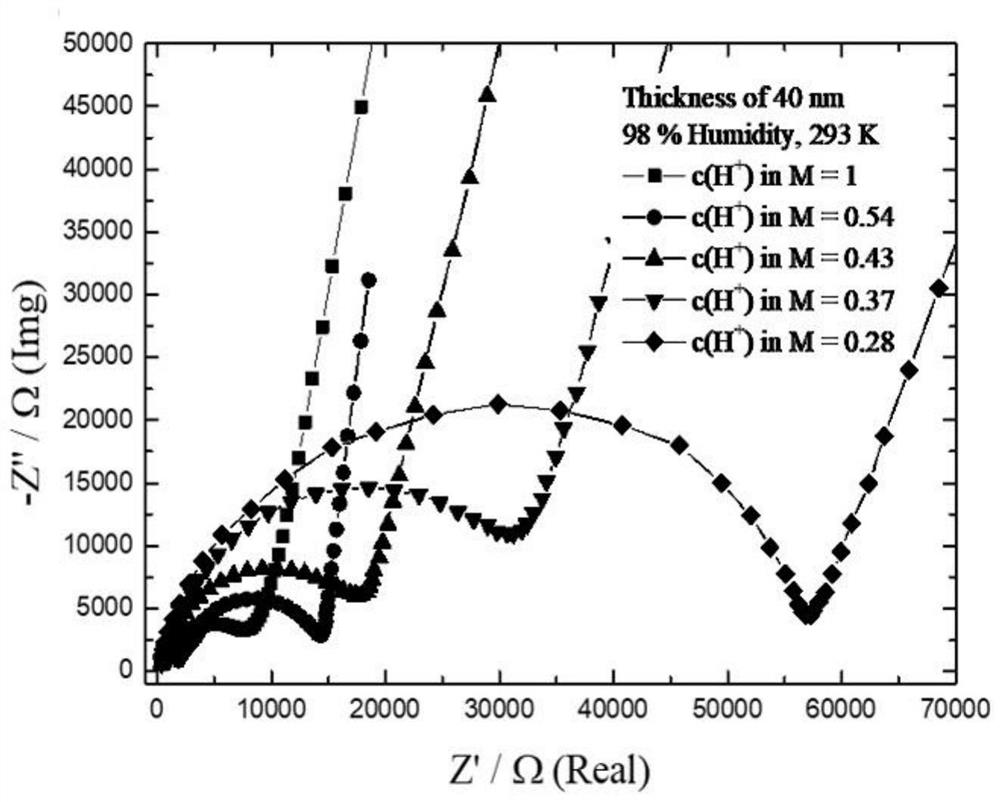Method for preparing and testing ion-polluted Nafion film based on fuel cell catalyst layer
A technology for ionic pollution and fuel cells, which is used in electrochemical variables of materials, preparation of samples for testing, measurement devices, etc.
- Summary
- Abstract
- Description
- Claims
- Application Information
AI Technical Summary
Problems solved by technology
Method used
Image
Examples
Embodiment 1
[0044] A kind of preparation and testing method of ion pollution Nafion film based on fuel cell catalytic layer, comprises the steps:
[0045] S1, with equivalent mass (EW) 1000, concentration is the commercial Nafion solution of 20wt.%, dilutes to 0.5wt.% through isopropanol, ultrasonic 5 minutes, makes the ionic micelles in the solution evenly disperse in the solution, then stand still for 24 hours;
[0046] S2. Ultrasonic cleaning the interdigital electrodes with acetone, methanol, and isopropanol for 10 minutes respectively, and then ultrasonic cleaning with ultrapure water for 10 minutes, and drying;
[0047] S3, put the interdigitated electrode into a Nafion solution with a mass fraction of 0.5wt.%, so that the solution does not cover the surface of the electrode, take it out after standing still for 24 hours, and dry it with nitrogen;
[0048] S4, put the dried interdigitated electrode into a 60°C oven to fully volatilize the organic solvent in the film;
[0049]The t...
Embodiment 2
[0057] A kind of preparation and testing method of the ion pollution Nafion thin film based on fuel cell catalytic layer, comprises the steps: the difference with embodiment 1 is that the concentration of Nafion solution is changed into 1wt.%, keep other implementation conditions constant, can Prepare a Nafion film with a thickness of 120nm, and the degree of contamination of the film obtained after ion exchange is as follows: figure 2 shown in .
PUM
| Property | Measurement | Unit |
|---|---|---|
| width | aaaaa | aaaaa |
| length | aaaaa | aaaaa |
| thickness | aaaaa | aaaaa |
Abstract
Description
Claims
Application Information
 Login to View More
Login to View More - R&D
- Intellectual Property
- Life Sciences
- Materials
- Tech Scout
- Unparalleled Data Quality
- Higher Quality Content
- 60% Fewer Hallucinations
Browse by: Latest US Patents, China's latest patents, Technical Efficacy Thesaurus, Application Domain, Technology Topic, Popular Technical Reports.
© 2025 PatSnap. All rights reserved.Legal|Privacy policy|Modern Slavery Act Transparency Statement|Sitemap|About US| Contact US: help@patsnap.com



